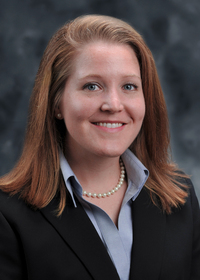Food Safety & Risk Reduction for Deer Processors
Processing wild game, particularly deer, can be a profitable business. As an operator, you have a responsibility to maintain certain standards of cleanliness and ensure the integrity of the products that are delivered to your customers. The following information is provided as a guide to some of the basic principles of wild-game processing.
Be Aware of Regulations
Venison products are not under mandatory inspection by the United States Department of Agriculture (USDA). According to the Mississippi Department of Wildlife, Fisheries, and Parks, deer meat may not be sold into commerce within the state. In most cases, you are operating under a “custom exemption,” which allows you to process an animal for a fee and return it to the owner. The owner is also not allowed to sell the product after it has been processed.
Facility Setup
Maintain the basic requirements for a sanitary food-processing facility:
- Potable water source (obtain a certificate of potability from the health department).
- Control for pests, including insects and rodents.
- Manage wastewater. Make sure floor drains flow properly and that you can flush any blood down the drain.
- Manage offal and trash. Set up disposal with the appropriate company for each.
- Use easily cleaned, nonporous materials for all surfaces.
- Avoid materials that will corrode, rust, chip, etc.
- Maintain restrooms and other employee facilities in clean, working order.
Personnel Hygiene
The people who work in your facility are considered “food-contact surfaces.”
- Document a standard operating procedure for handwashing.
- Enforce and follow it.
- At minimum, wear gloves, aprons, and hair coverings.
- Remove jewelry, keep fingernails clean and short, and do not eat, drink, smoke, or chew tobacco in the processing area.
- If an employee is sick, make sure he or she stays home; do not allow sick employees to handle food products.
Cleaning and Sanitizing
At the end of every shift:
- Break down all equipment, including saws, grinders, mixers, packaging equipment, and any other equipment, as far as possible.
- The “nooks and crannies” are where dangerous bacteria hide and thrive.
- Wash all tables, totes, and cutting boards. Clean the walls if possible.
- Remove large particles of meat, fat, and so forth.
- Pre-rinse with cool water, starting at higher surfaces and working downward.
- Apply soap and scrub all surfaces with a brush, scrub pad, or similar.
- Rinse with hot water, starting at higher surfaces and working downward.
- Apply sanitizing solution or rinse with very hot (180°F) water.
- Allow everything to air dry.
- Use food-grade silicone spray, if desired, to help prevent rust formation on grinder blades or other susceptible equipment.
- Clean floors with soap and sanitizer; use a squeegee to push water toward drains.
- Consider adding a mid-shift cleanup if possible.
- Inspect all equipment at the start of the processing day, and re-clean if needed before starting work.
Sanitizing Solutions
Sanitation is the creation and maintenance of hygienic and healthful conditions (Marriott & Gravani, 2006). Many different types of sanitizing solutions are available. Rotating in a different sanitizer every few weeks will help avoid buildup of resistant bacteria. Make sure the surfaces are washed before applying sanitizer, as fats and proteins will decrease sanitizer efficacy.
Some of the commonly used options are:
- Very hot water (180°F). Make sure to maintain the temperature and ensure that the water maintains contact with all surfaces long enough to kill bacteria. Using hot water can cause condensation in refrigerated areas, leading to other bacterial issues later.
- Chlorine (sodium hypochlorite/bleach). Various types of chlorine-containing sanitizers may be purchased, or a sodium hypochlorite solution can be made from bleach purchased at retail stores.
- Use only regular, unscented bleach. Do not use high-efficiency, scented, or reduced-splashing bleach products. These contain additional chemicals that are not acceptable for use in food facilities.
- Check the label for the bleach’s sodium hypochlorite content, and then use Table 1 to determine the right combination of water and bleach to make a solution. The solution should be between 50 and 200 ppm sodium hypochlorite.
- Surfaces must be air dried or rinsed with potable water to remove residues. Chlorine compounds can cause corrosion over time.
- Make solutions fresh daily.
- Quaternary ammonium (Quats). These widely available compounds are effective against bacteria and molds, but not against spores. They may be sourced from industrial supply companies and should be used according to label directions. Quats are relatively nontoxic, noncorrosive, and nonstaining, but they do leave a residue. This residue has some antimicrobial properties, but it can cause buildup over time.
- Iodophors. These iodine-containing compounds work best in acidic solutions and generally do not cause mineral buildup or skin irritation. However, they can be less effective than chlorine on spores, and they also can lose strength over storage time. Some iodine-containing compounds can stain certain materials, including plastic. Use iodophors according to label directions.
Table 1. Amounts of hypochlorite to add to clear, clean water for disinfection (Bachman & Earles, 2000).
|
Amount of hypochlorite |
target ppm |
ounce/ 5 gallons |
cup/ 50 gallons |
|---|---|---|---|
|
Sodium hypochlorite (5.25%) |
50 |
.55 |
.5 |
|
75 |
.8 |
.75 |
|
|
100 |
1.1 |
1.0 |
|
|
125 |
1.4 |
1.25 |
|
|
150 |
1.7 |
1.5 |
|
|
Sodium hypochlorite (12.7%) |
50 |
.12 |
.1 |
|
75 |
.17 |
.15 |
|
|
100 |
.23 |
.2 |
|
|
125 |
.29 |
.25 |
|
|
150 |
.35 |
.3 |
Avoid Cross-Contamination
Cross-contamination occurs when bacteria or other harmful organisms are transferred from one food product to another.
If a deer enters your facility carrying a high bacterial load from improper handling, it could potentially contaminate all other deer processed on the same equipment, leading to faster spoilage or foodborne illness.
- Be aware of what comes into your facility. Reject deer that appear spoiled or mishandled.
- If something looks or smells “off,” have a plan for what to do with the meat or carcass (discard the product, return to the owner, etc.). Communicate this policy to your customers. Plan to clean and sanitize surfaces that have been in contact with the spoiled meat.
- Use a wash of 3 percent acetic acid (vinegar) on carcasses after skinning. This will help reduce the bacterial load on the carcass that could spread to other carcasses.
- Consider sanitizing knives and surfaces between animals or at least periodically throughout the shift. This will cut down on the spread of bacteria.
- If you make ready-to-eat products like jerky or snack sticks, ALWAYS handle them using clean gloves and wearing clean aprons or coats. Cover the cooked products and store them separately from raw meats.
Temperature Control
Bacteria that cause disease and spoilage grow best in the “danger zone” of 40 to 140°F. Avoid letting product temperature remain in this zone any longer than necessary. The FDA Food Code recommends fewer than 4 hours.
- Advise hunters to get deer out of the woods and into the processing facility as quickly as possible.
- Suggest quartering deer to make it easier to fit in coolers.
- Avoid completely removing all meat from the bones until the animal has gone into rigor mortis (stiffening). If the carcass is boned out too soon, it could cause extreme toughening of the meat.
- Reject deer that have not been chilled quickly and kept cool.
- Keep the processing area as cool as possible. If a processing room is warmer than 50°F, the processing time should be minimized; fewer than 2 hours is recommended.
- Take out only as much meat as you will process during a short time, work it up, then return it to the cooler.
- If you’re making fully cooked product, it must reach 160°F to kill disease-causing bacteria.
- Cooked product must be chilled quickly, from 130 to 80°F within 1.5 hour, then from 80 to 40°F within 5 hours, according to USDA-FSIS Appendix B.
Hide Removal Considerations
Hide on or hide off? Leaving the hide intact can keep dirt and other contaminants off the meat; however, it can also trap heat, making the chilling time longer. Additionally, this is another step that you will be responsible for in the processing facility.
The Three C’s for Hunters
These are simple principles for meat processors that apply to deer hunters, as well. Remind hunters that they take the first steps in producing a safe and quality product. You cannot undo bacterial contamination or save meat that has gone rancid.
Hunters should try to keep the carcass:
- Clean. If hunting relatively close to home or camp, consider not field-dressing until returning to a clean area. If you open the animal up, then drag it through the woods, you will be introducing more dirt and bacteria. Wash of any gut contents, blood, and so forth, and cut out any fecal contamination.
- Cold. Chill the carcass as soon as possible, and keep it cold. Don’t leave it in the back of the truck for days at a time, especially if the temperature is above 40°F.
- Covered. Cover the carcass en route to the processor to prevent dirt, flies, and pests from coming in contact with the carcass.
Remember that you will be eating this meat! You wouldn’t drive around with unrefrigerated, uncovered steaks in the back of the truck for days at a time—don’t do it with deer meat, either!
References
Amezquita, A., Wang, L., Thippareddi, H., Burson, D., and C. Weller. 2005. Meat and Fabridation-Room Temperatures for Food Safety. Lincoln, Nebraska: University of Nebraska-Lincoln Extension, Institute of Agriculture and Natural Resources.
Bachmann, J., and R. Earles. 2000. Postharvest Handling of Fruits and Vegetables. Horticulture Technical Note. Appropriate Technology Transfer for Rural Areas. United States Department of Agriculture.
Beef Industry Food Safety Council. 2016. Best Practices for Beef Slaughter. Revised: February 2016.
Cutter, C.N. 2011. Proper Field Dressing and Handling of Wild Game and Fish. University Park, PA: Penn State Cooperative Extension.
Marriott, N.G. and R.B. Gravani. 2006. Principles of Food Sanitation. 5th ed. New York, NY: Springer Science+Business Media, Inc.
McGlynn, W. Guidelines for the Use of Chlorine Bleach as a Sanitizer in Food Processing Operations. Food Technology Fact Sheet. Stillwater, OK: Food and Agricultural Products Research and Technology Center, Oklahoma State University.
Pfunter, A. 2011. Sanitizers and Disinfectants: The Chemicals of Prevention. Food Safety Magazine.
The information given here is for educational purposes only. References to commercial products, trade names, or suppliers are made with the understanding that no endorsement is implied and that no discrimination against other products or suppliers is intended.
Publication 3049 (POD-04-23)
By Christine Leick Cord, PhD, former postdoctoral associate, Food Science, Nutrition, and Health Promotion; J. Byron Williams, PhD, PAS, Associate Extension Professor, Central Mississippi Research and Extension Center; and Tim Armstrong, former meat laboratory manager, Animal and Dairy Sciences.
The Mississippi State University Extension Service is working to ensure all web content is accessible to all users. If you need assistance accessing any of our content, please email the webteam or call 662-325-2262.







